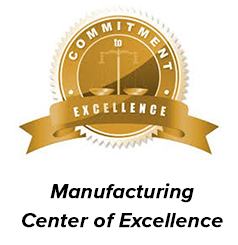Lean Manufacturing

Lean Manufacturing first began in Highland Park, MI in 1913. A gentleman by the name of Henry Ford developed the first truly integrated production process. Mr. Ford effectively aligned the fabrication steps in the automobile manufacturing system wherever possible using specialized equipment and quick quality check go/no-go gauges to machine and assemble the components going into the Ford Model-T. This allowed for the rapid delivery of perfectly fitting components at the point of use. In this manner, Ford was able to turn the entire company’s inventory in just a few days with one exception: there could be no variety in the accessories or options and all vehicles were limited to just one color – black.
After World War II, Kiichiro Toyoda, Taiichi Ohno, and a team at Toyota looked at the Ford production system from a very different view than other competitors. Rather than try to adopt the production system as designed, they focused on ways it could be improved. This intense assessment included visits to America including trips to the Ford manufacturing plant. As they closely studied American culture and the Ford production system, they concluded that a series of simple innovations and adjustments would effectively provide for both continuity in the process flow and allow for a wider variety in product offerings. Today this is called the Toyota Production System (TPS) or better known in North America as Lean Manufacturing.
The methods and processes of such a manufacturing model aim to maximize value, and at the same time, minimize waste. The intent is to add value to a product that customers will pay for. All other things are therefore considered a waste and if not removed from the manufacturing process will likely increase lead-time and reduce profit. There is, however, an even greater critical to success factor in the DNA of the “Toyota Production Systems” that is sometimes forgotten in North America’s Lean Production System journeys – Culture!
Culture is what determines the effectiveness and sustainability of the system. Quite often, managers work in haste and apply lean principles to a business application, without even considering the employees or the customer-need for change. This leads to change, which employees and customers alike do not expect, understand, or want. To this point, Synergy Resources’ strongly suggests that if you want to have an effective and sustainable program, you should approach your journey by taking the following steps in the sequence shown:
1. The first thing a manufacturer must do is define a compelling reason why change is important. Examples may include:
- Survivability if revenue and / or profit are on a decline
- Increase competitive position if you are losing quotes and business
- Improve customer experience / satisfaction if your customers are complaining or going to someone else
2. The compelling reason should then be linked to the company’s strategy and KPI’s such as:
- Win/Loss quote ratio
- Lead-Time
- On Time Customer Delivery
- Profitability
- Revenue Growth
3. The next step must clearly show why Lean is the correct vehicle to take on this journey.
- Start with Lean Management Training with an outside Lean expert trained in the “Toyota Production System” or at a minimum that understands change management and the cultural aspect of Lean Manufacturing
- Then select an individual that is highly respected by the employees and who will have authority to be the Continuous Improvement Lead
- Use the outside expert to help develop a current and future state Value Stream Map (VSM) that clearly defines the direction and specifies the opportunities for improvement
- Use the outside expert to build out a 6-8-month improvement plan based on the VSM
- Use the outside expert to train the CI Lead over the same 6-8-month period while conducting Kaizen events
- After that 6-8-month period, the CI Lead should assume oversight of the entire program and the outside expert should be retained to conduct quarterly assessments to ensure sustainment
In all cases, an effective, sustainable program includes the above steps. Properly executed, Lean will help manufacturers reduce waste, increase value-added activities, improve customer and employee satisfaction, maximize profits with lesser floor space requirements, and reduce inventory and lead time.
The experts at Synergy Resources are focused on the success of North American Manufacturing and stand ready to help and support you in your journey to achieve sustainable success with your Lean Manufacturing Program.
Contact us today to start your lean journey

About the author:
Michael Canty is an Executive Vice President at Synergy Resources. Throughout his thirty plus years of service he has used his vast knowledge and by applying various strategies, technologies, tools and methodologies, helped a large number of organizations develop and implement effective business strategies and processes leading to improved operational performance.


